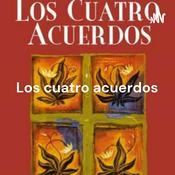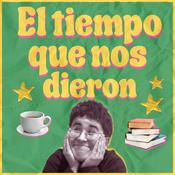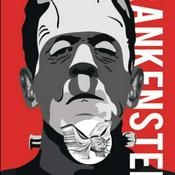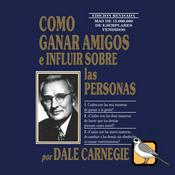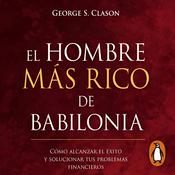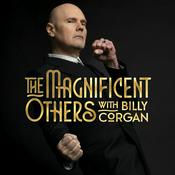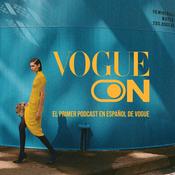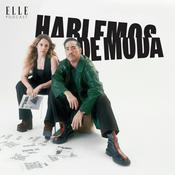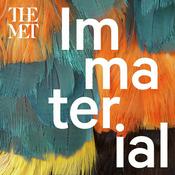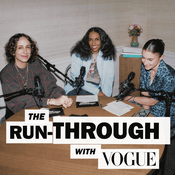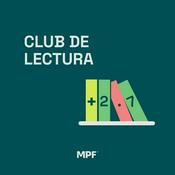447 episodios

2025 Photo Gear of the Year, with Kevin Rickert
01/1/2026 | 1 h 44 min
In case you didn't already know, 2025 marks 10 years since we started the B&H Photography Podcast, making today's show our tenth annual Photo Gear of the Year episode! A lot of cameras have come down the pike since that first recap, along with a veritable roller coaster of marketing strategies and photographic trends. To follow up on a trend discussed last year, we start out with a nod to point-and-shoots, a craze that, according to Kevin, has "become fever pitch." To expand on this theme, we look back in time to when digital point-and-shoots were losing ground to the ubiquitous camera phone, leading to Mike's theory that the current digicam trend is "real nostalgia for mid-aughts frivolity." We also point to a multi-tiered strategy among manufacturers, allowing them to cater to different user bases—from vloggers to professionals to hybrid shooters to the all-important enthusiast market. This lighthearted banter leads into our main course, focused on new releases from Canon, FUJIFILM, Godox, Hasselblad, Leica, Nikon, OM SYSTEM, Panasonic, Peak Design, Ricoh Pentax, Sigma, and Sony. Finally, in addition to predictions for 2026, we wrap things up with Kevin's picks for travel-friendly photo accessories to catch his eye this year. Stay to the end to learn about Peak Design's latest travel bags and tripods, plus the innovative modular design behind a new flash system from Godox. Guest: Kevin Rickert Episode Timeline 2:50: Kevin looks back at recent camera trends, and identifies separate tiers for vlogging, high resolution cameras, hybrid cameras, and the nostalgia for old point & shoots. 9:11: Canon releases: R50 V, R6 Mark III, Powershot V1… plus a nod to the older G7 X Mark III 18:00: FUJIFILM releases: X-half digital camera, X-E5, X-T30 III, GFX100RF, Instax Wide EVO 33:10: Hasselblad release: X2D II 100C 37:37: Leica releases: M EV1, Q3 Monochrome, SL3-S, SL3 Reporter 43:30: Episode break 43:52: Nikon releases: ZR 6K, Z5 II, and a Z6 III firmware update 54:22: OM SYSTEMS releases: OM-3, OM-5 MK II 57:38: Panasonic releases: S1R II, S1 II, S1 IIE 1:02:48: Ricoh release: GR IV 1:05:40: Sigma release: BF Mirrorless 1:09:48: Sony releases: RX1R III, FX3A, FX2, a7 V 1:23:50: Kevin's recommendation for a better editing workflow when travelling with an Apple iPad Pro 1:26:06: Peak Design releases: Roller Pro Carry-On & Pro Carbon Fiber Tripods with Ball Head 1:28:45: Godox release: iT-32 TTL Mini Flash system 1:30:12: Revisiting the current point and-shoot craze and the digicam look 1:34:52: Kevin's upcoming travel plans, and thinking ahead for the total eclipse in mid-August 2026 1:39:00: Kevin, Derek, and Mike share their predictions for 2026 Guest Bio: Kevin Rickert is B&H Photo's Senior Sales Trainer for Photography and Lighting. It's Kevin's job to keep in touch with camera and lens manufacturers and get details about all the latest releases and updates. His role is to make sure the world-renowned B&H staff has all the information to answer your who, what, why, and other questions that you may ask, so they can satisfy all your wants and needs. Born and raised in New York, Kevin is an intrepid street photographer, an avid traveler, and a baseball fan with 23 years in electronic retail, the last 11 of which have been spent as a sales trainer at B&H. Stay Connected: B&H Photo Video Website: https://www.bhphotovideo.com B&H Photography Podcast landing page: https://www.bhphotovideo.com/explora/podcasts B&H Photography Podcast on B&H Photo's YouTube channel: https://www.youtube.com/@BandH/podcasts B&H Photo Video Instagram: https://www.instagram.com/bhphoto B&H Photo Video Twitter: https://twitter.com/bhphoto Credits: Host: Derek Fahsbender Senior Creative Producer: Jill Waterman Senior Technical Producer: Mike Weinstein Executive Producer: Richard Stevens

Next Frame: Get Undeniably Qualified for a Photo Career, with Chelsea Mayer
18/12/2025 | 40 min
"Wow, this is your job? I didn't know that was a job! That's amazing. Can I have this job?" That offhand epiphany neatly sums up the enviable career path of wildlife, adventure, and travel photographer Chelsea Mayer. From an early start with her mom's camera to her selection for an Ambassador mentorship, before becoming a partner photographer, with Girls Who Click, all the way through to her certifications as a 100-ton boat captain and professional divemaster, the course Chelsea plotted has made her undeniably qualified for a thriving career. In today's show, we do a deep dive into the steps she's taken to keep her career moving forward and the vital role of mentors who've kept her motivated and focused on details that count. And on the flip side, Chelsea talks about common fears and obstacles creatives must overcome to land a dream job like her current role with National Geographic Lindblad Expeditions. "There are so many different paths to get a job in photography or adjacent to photography," Chelsea points out. Yet, as her story make crystal clear, "How do you know that you want to do it if you didn't know it exists? Guest: Chelsea Mayer Episode Timeline: 2:15: Chelsea's early interest in photography and filmmaking, then adding structure through formal education. 5:31: From a casual whale watching trip to finding a photo job on the boat. 8:26: Chelsea's involvement with the organization Girls Who Click—from ambassador to partner. 13:18: Chelsea talks about uncertainty and roadblocks in building her photo career. 15:29: Pivoting to a new opportunity to sell limited edition fine art prints due constant travel in her current job. 18:49: Overcoming a fear of public speaking in a new role at National Geographic Lindblad Expeditions. 22:04: Chelsea's gear for whale watching expeditions and underwater work. 24:48: Chelsea's disarming approach to teaching, the inspiration she draws from the outside world, and finding focus in photographing for fine art prints. 30:46: Chelsea describes a magical underwater experience with a Mola Mola. 32:48: Breaking through walls and asserting herself in a male dominated field. 36:01: Chelsea's aspirations for the future: owning a boat and teaching photography in Antarctica. 37:24: Advice for other young photographers: become undeniably qualified. Guest Bio: Chelsea Mayer is a photographer and cinematographer specializing in wildlife, adventure, and portrait photography. A California native, she attended UCLA's School of Theater, Film and Television, earning a BA in film production. After spending a few years working on films, Chelsea turned her sights seaward to work as a wildlife photographer and social media manager for local whale watching boats. In 2022, she joined National Geographic Lindblad Expeditions as a certified photo instructor, captain, and naturalist, traveling along the Pacific coast from Alaska to Baja, and to Scotland. Chelsea is a US Coast Guard-licensed 100-ton Captain, a professionally certified Divemaster, a certified naturalist for a number of organizations, and a Partner Photographer with Girls Who Click, a nonprofit mentorship organization dedicated to empowering the next generation of female nature photographers. When not on expedition or pursuing photo projects, Chelsea works as a dive supervisor, camera assistant, and safety diver for natural history film productions. Stay Connected: Chelsea Mayer Website: https://www.chelseamayerphotography.com/ Chelsea Mayer Instagram: https://www.instagram.com/chelseamayerphotography/ Credits: Host: Derek Fahsbender Senior Creative Producer: Jill Waterman Senior Technical Producer: Mike Weinstein Executive Producer: Richard Stevens

Mylene Mae on Trends, Staying Curious, and Creating for Fun
11/12/2025 | 29 min
Join Deanna as she welcomes professional side-quester, storyteller, and video editor, Mylene Mae (@mylenesmind). Mylene shares her personal journey, including how she pivoted from working in STEM and got started in video, as well as her learning process and the struggles of digesting long-form content. They discuss the importance betting on yourself, staying curious, and forgetting the metrics and finding the fun in content creation. Credits: Host & Creative Producer: Deanna Testa Creative Producer: Elena Maidebura Creative Editor: Larissa Mattei Technical Producer: Mike Weinstein Executive Producer: Richard Stevens

Discovering Forgotten Visual Histories, with Alan Govenar & Adam Forgash
04/12/2025 | 1 h
Photographs preserve what daily life cannot—moments that would otherwise fade into obscurity. In today's show, we explore this topic through a nexus of American culture, popular folklore, and photographic archives in a chat with Alan Govenar and Adam Forgash, two photographers and visual historians who are passionate about unearthing and preserving forgotten stories. Coming from different backgrounds, Alan's formal training and experience with the non-profit Documentary Arts complements Adam's hands-on skills hunting for treasures and selling vintage photographica at New York's Chelsea Flea Market. A few of the points they discuss include: the central role of the community photographer in twentieth-century life, the cultural significance of Route 66 as a favored connection point, the painstaking process of resurrecting century-old portraits from damaged glass plates, and much more. As Adam notes about these rescued portraits now titled "Faces of the Mother Road," "I've had these kinds of collections over the last 30 years and kind of let them go, but this one, I knew there was something special about it. So, as soon as I realized what I was looking at, I stopped. I put it in climate control storage. I got archival paper to put it in. I started a numbering system. "It feels pretty good," he adds, "to get more serious about my craft, realizing that I am a photo historian, even though I don't have a degree." Guests: Alan Govenar & Adam Forgash Episode Timeline: 3:07: Alan Govenar's early connections to photography and his introduction to Stoney, the hunchbacked tattoo artist who jumpstarted his photo career. 8:33: The role various media has played in Alan's work as an interdisciplinary artist and how changes to media has influenced his storytelling. 11:37: Adam Forgash describes New York's Chelsea Flea Market and the treasure trove of 8,000 glass negatives he discovered there. 16:18: A peek into the Texas African American Photography Archive, and the era of the community photographer. 22:02: Storytelling within a historical context and a photographer's accountability in reverse engineering a story from vestiges of the past. 27:01: Adam's accidental discovery of a second half to SJ Tyler's archive and tracking down information about the photographer. 30:49: Connecting the story of SJ Tyler's portrait studio to an exhibit celebrating the centennial of Route 66. 32:28: Episode Break 33:47: Making distinctions between Alan's formal education in folklore and Adam's schooling at the hands of New York's Chelsea flea market crowd. 40:23: Adam's approach to beginning this project, and how SJ Tyler's collection differed from past archives he's worked on. 42:52: Connections between Tyler's photographs and the significance of travel on Route 66, plus Adam's relationship to Tulsa. 44:26: Placing photographic stories in a wider historical context and their connection to the communities being served. 49:54: Funding and sponsorship for large photographic projects and the benefits to working with a registered non-profit as a pass-through organization. Guest Bios: Alan Govenar is an acclaimed photographer, filmmaker, writer and folklorist. A 2010 Guggenheim Fellow and the author of more than 40 books, Alan is also founder and president of the organization Documentary Arts, which he created to spotlight marginalized voices and cultures, through projects such as the Texas African American Photography Archive. As a filmmaker, Alan has produced and directed documentaries in association with NOVA, ARTE, and PBS. And as a playwright, he has written and produced musicals that have been performed from New York City to major venues across Europe. This year marks some major milestones in Alan's career, with a photography retrospective at the Center for Photography at Woodstock, a new documentary film premiering at New York's Cinema Village, and the publication of three new books, including Kinship & Community, released by Aperture. Adam Forgash is a photographer, filmmaker, photo history specialist, and proud former Oklahoman. In 2023, while foraging for visual treasures at New York's famed Chelsea Flea Market, Adam happened upon the archive of the undiscovered portrait photographer Sidney J Tyler. From 1913 to 1943, Tyler operated a photo studio in Afton, Oklahoma, making portraits of everyday subjects as they passed through the region, during a break in their travels along Route 66, otherwise known as the "Mother Road". This once-lost visual history of northeast Oklahoma features working-class people of all races and communities, including the famed Tuskegee airmen. After two years of intensive research into Tyler's archive, Adam's project, now titled Faces of the Mother Road: The Lost Portraits of S.J. Tyler - A Route 66 Story, is poised to make a lasting impact on Oklahoma's visual and historical narrative, just in time for the centennial of Route 66 in 2026. Stay Connected: Alan Govenar Documentary Arts Website: https://www.docarts.com/ Adam Forgash Website: https://adamforgash.com/ Adam Forgash Instagram: https://www.instagram.com/adamforgash/ Credits: Host: Derek Fahsbender Senior Creative Producer: Jill Waterman Senior Technical Producer: Mike Weinstein Executive Producer: Richard Stevens

Tolú Ekundare on Landing Netflix, Podcasting, and Building Your Own Voice
01/12/2025 | 39 min
In Episode 7, host Deanna Testa sits down with the vibrant and hilarious, Tolú Ekundare (@tolukundare) to spill the tea on what it takes to grow as a modern creator. Tolú shares how she landed two big Netflix shows, the challenges of getting started in the podcasting space, and how she continues to build her own brand while staying her most authentic self. Credits: Host & Creative Producer: Deanna Testa Creative Producer: Elena Maidebura Creative Editor: Larissa Mattei Technical Producer: Mike Weinstein Executive Producer: Richard Stevens
Más podcasts de Arte
Podcasts a la moda de Arte
Acerca de B&H Photography Podcast
Escucha B&H Photography Podcast, Audiolibros completos en español, para escuchar gratis. y muchos más podcasts de todo el mundo con la aplicación de radio.net

Descarga la app gratuita: radio.net
- Añadir radios y podcasts a favoritos
- Transmisión por Wi-Fi y Bluetooth
- Carplay & Android Auto compatible
- Muchas otras funciones de la app
Descarga la app gratuita: radio.net
- Añadir radios y podcasts a favoritos
- Transmisión por Wi-Fi y Bluetooth
- Carplay & Android Auto compatible
- Muchas otras funciones de la app


B&H Photography Podcast
Descarga la app,
Escucha.



